‘Magic: The Gathering’ Designers Reportedly Drop Internal Use Of The Term ‘Tribal’ Due To “Negative Connotations”
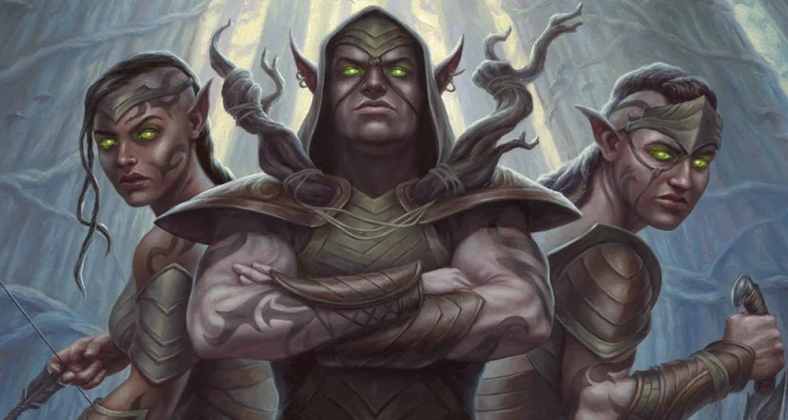
In continuing to sanitize their products in the hopes of reaching a non-existent ‘wider audience’, Wizards of the Coast has confirmed that its Magic: The Gathering developers have moved away from internally using the term “tribal” due to its supposed “negative connotations”.
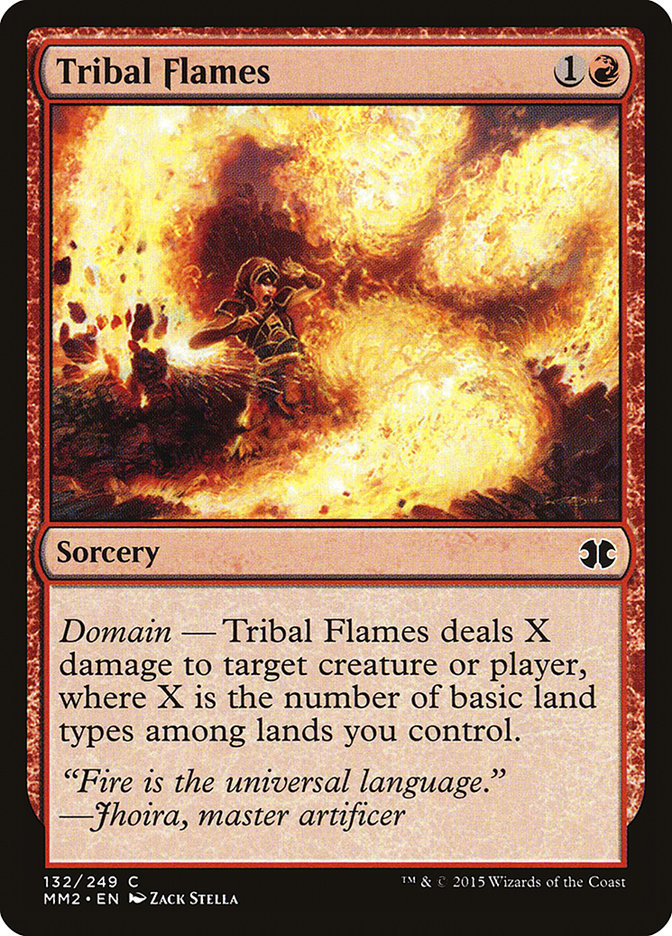
Tribal Flames via Card #132, Magic: The Gathering – Modern Masters (2015), Wizards of the Coast. Art by Zack Stella.
This latest change to the once-prestigious collectible card game’s culture was first confirmed by the game’s head designer, Mark Rosewater, in the June 19th entry into his Lessons Learned series, a regular column wherein he “walk[s] through walk through every set for which I’ve led or co-led design and talk about what I learned.”
Reflecting on his time working on the game’s 2017 ‘Ixalan’ expansion set, Rosewater detailed how, thanks to his desire to introduce a new mechanic which forced players to come into conflict over a specific resource, the set’s original two-faction storyline was eventually reworked to include a third.
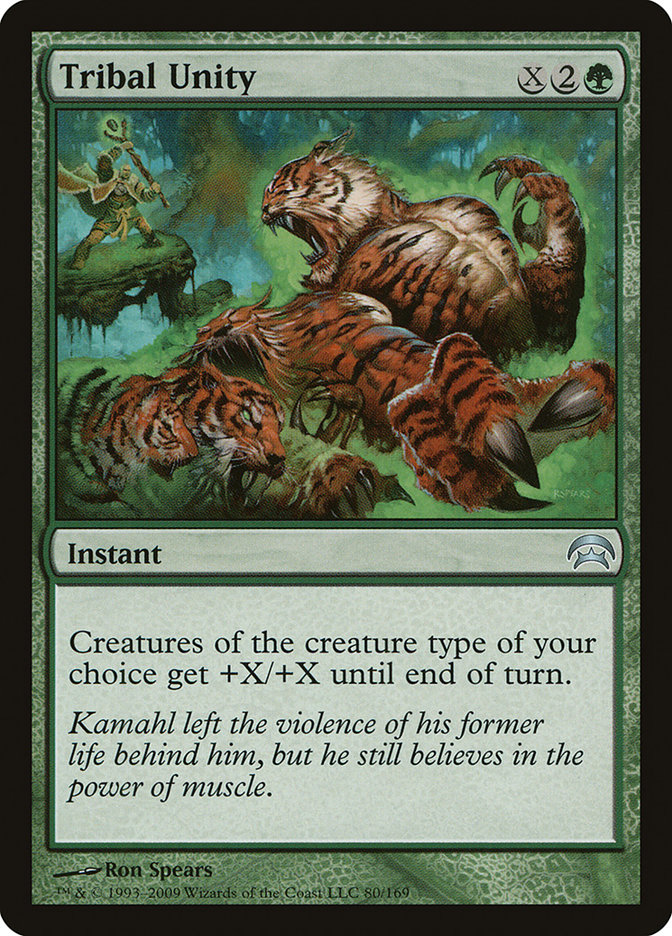
Tribal Unity via Card #80, Magic: The Gathering – Planechase (2009), Wizards of the Coast. Art by Ron Spears.
Unfortunately, thanks to internal issues regarding the mechanic’s implementation, Rosewater was then asked once again to revamp the entire concept in order to better fit within the Magic setting.
To this end, he revealed that “Working with the Creative team, I realized that the two most exciting elements of the plane were two new creature types, Dinosaurs and Pirates. Dinosaurs were in past sets but hadn’t been fully supported mechanically as a creature type. There had been a few Pirates, but only a handful, and they were never given any mechanical cohesion.”
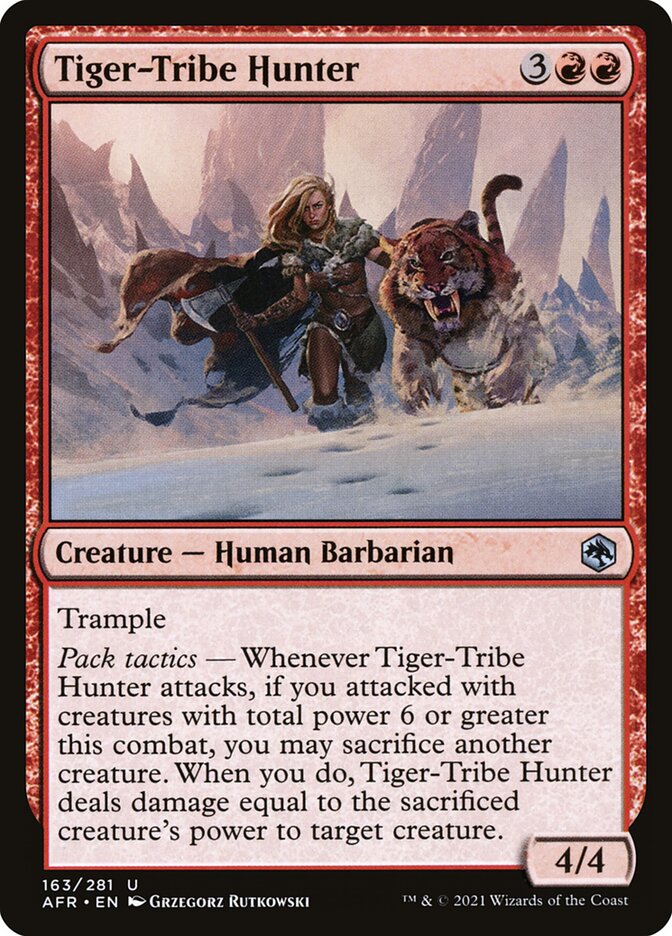
Tiger-Tribe Hunter via Card #163, Magic: The Gathering – Adventures in the Forgotten Realms (2021), Wizards of the Coast. Art by Grzegorz Rutkowski.
“As such,” he added, “I ended up making the call to have four factions, each with its own typal reward.”
It was at this point in his blog post that Rosewater took a moment to address his unfamiliar use of the word ‘typal’, explaining, “We’ve stopped using the word ‘tribal’ in R&D as numerous consultants have stressed that it carries negative connotations, so we now use ‘typal’ to mean ‘creature type mattering mechanically.'”
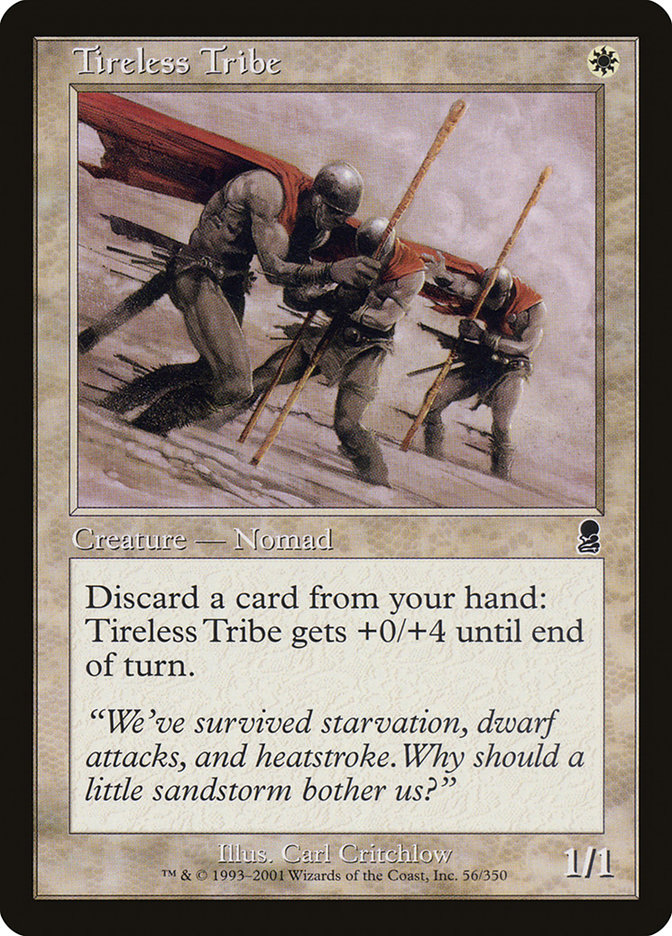
Tireless Tribe via Card #56, Magic: The Gathering – Odyssey (2001), Wizards of the Coast. Art by Carl Critchlow.
However, while Wizards’ employees began dedicating themselves to ridding the word ‘tribal’ from their vocabulary, it seems less attention was being given to the actual Ixalan expansion itself, as Rosewater ultimately admitted that the set was chock full of mechanical issues.
“As we started working with the set, it became apparent early on that we needed some way to tie the various creature types together mechanically,” he informed readers. “It was important that different drafters might want to draft the same cards. It’s what we refer to as ‘glue’ in R&D.”
“I needed glue,” said Rosewater. “Part of doing early design is solving the problems for the teams down river. I’d created a huge design problem and didn’t offer any tools to fix the issue. In the end, Ixalan had several mechanical issues, but I feel the biggest one was the lack of glue, and that rests squarely on me never having solved the issue structurally in the first place.”
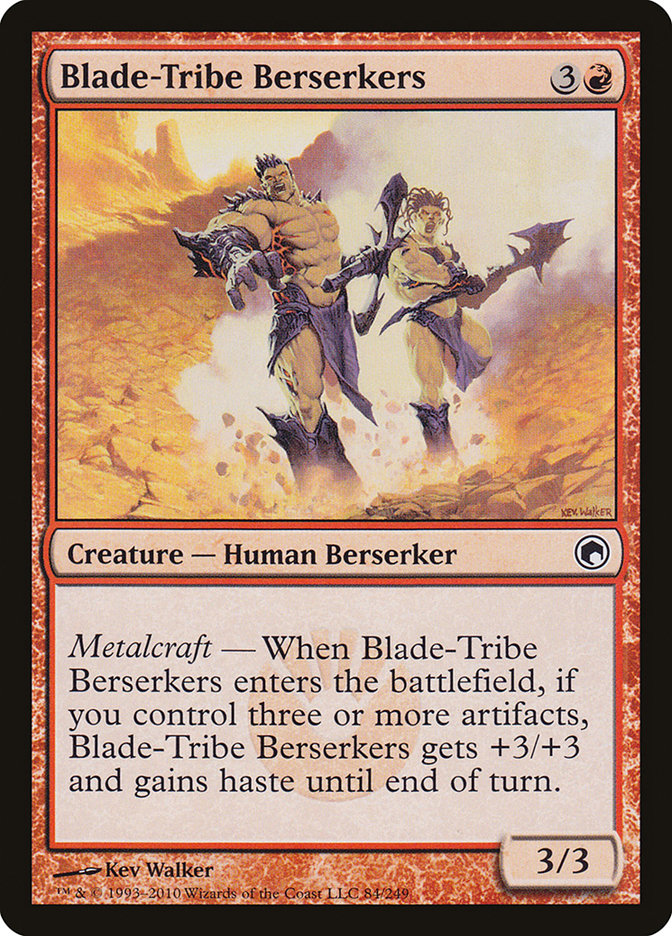
Blade-Tribe Bersekers via Card #84, Magic: The Gathering – Scars of Mirrodin, Wizards of the Coast. Art by Kev Walker.
While many were left confused as to whether or not WotC’s internal aversion to the term ‘tribal’ would be extending to the game itself, Rosewater clarified in a June 21st post to his personal Tumblr account, “R&D is now using the term internally, and I will use it in all my articles, podcasts, and blog posts. What language you wish to use is a personal choice.”
Currently, Magic: The Gathering features roughly 17 cards containing the word ‘tribe’ or ‘tribal’ in their texts, with the most recent such card produced being a 2022 reprint of the Sakura-Tribe Elder.
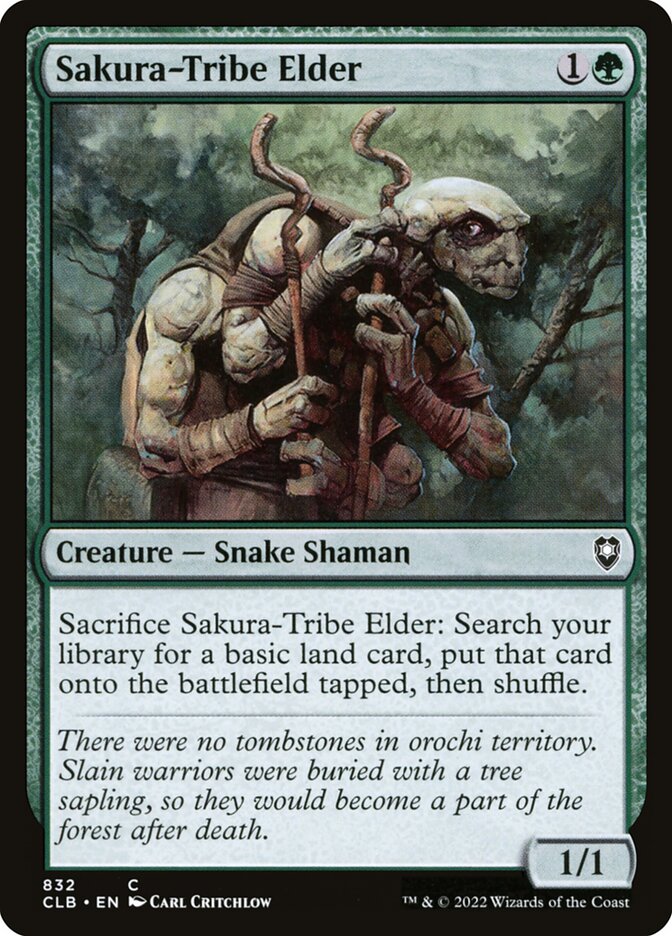
Sakura-Tribe Elder via Card #832, Magic: The Gathering – Commander Legends: Battle for Baludr’s Gate (2022), Wizards of the Coast. Art by Carl Critchlow.
More About:Tabletop Games & RPGs
